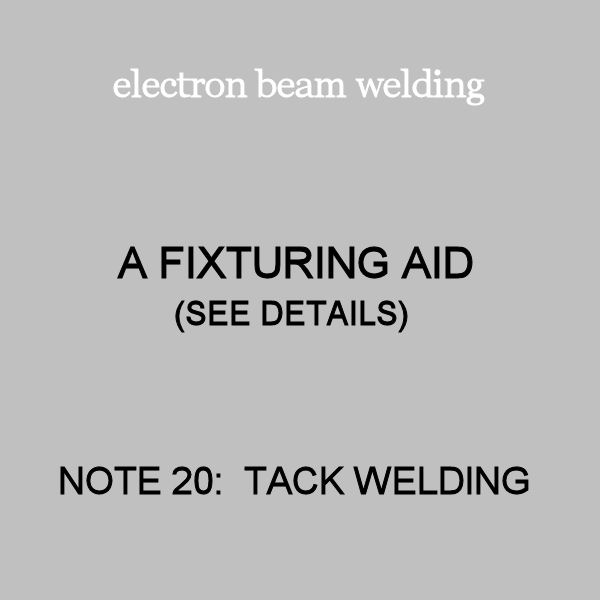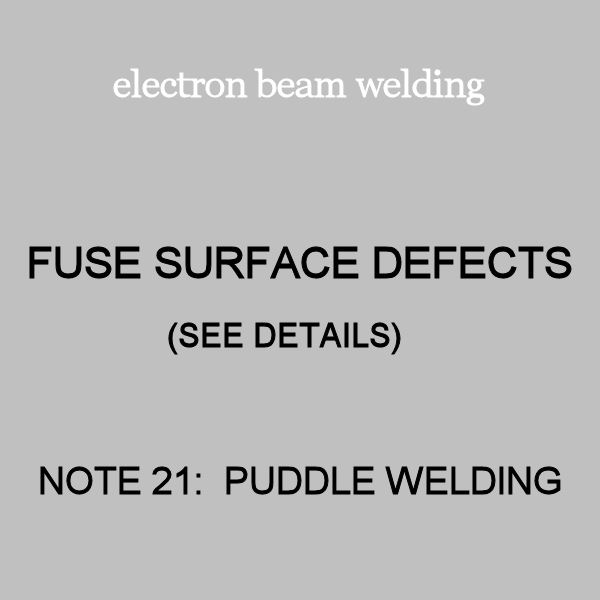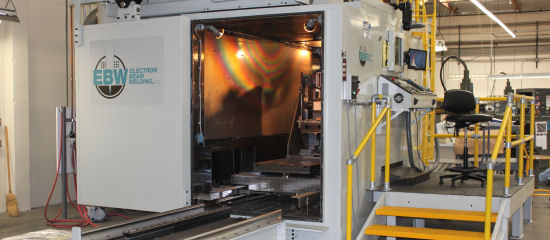MISCELLLANEOUS NOTES about ELECTRON BEAM WELDING
"TACK WELDING" FOR ELECTRON BEAM WELDING
FIGURE 20
Tack welding with the electron beam is generally useful as a fixuring aid.

Tack welds are made at less than the power needed for full penetration
(20% to 40%). It is often used in unrestrained parts to prevent
opening-up of the seam as full penetration welding progresses.
The tack weld is also helpful in maintaining the concentricity of mating
parts in rotary welds, although an interference fit is preferred.
Tacking
can be made as intermittent welds, but 100% tacking is more desirable. Note, there is a difficulty in relocating
the weld joint for the full penetration weld if 100% tacking is used, so
an occasional interruption is preferred as an aid in centerline joint location.
"PUDDLE WELDING" FOR ELECTRON BEAM WELDING
FIGURE 21
Puddle welding is frequently used with locally-preplaced filler metal additions.

Puddle welding is accomplished by manual manipulation of the
work piece under the beam, at low power, to locally fuse surface
defects in materials or welds.
Also, puddle welding is frequently used with locally-preplaced filler
metal additions.
"PENETRATION WELDS" FOR ELECTRON BEAM WELDING
A penetration weld is a trial and requires no joint preparation.
FIGURE 22

A penetration weld is the commonly used trial weld technique to determine
the welding parameters for a specific part thickness.
Generally, it simulates conditions of an actual butt joint properly
prepared and fixtured.
Note, often known as bead-on-plate (BOP) weld.







